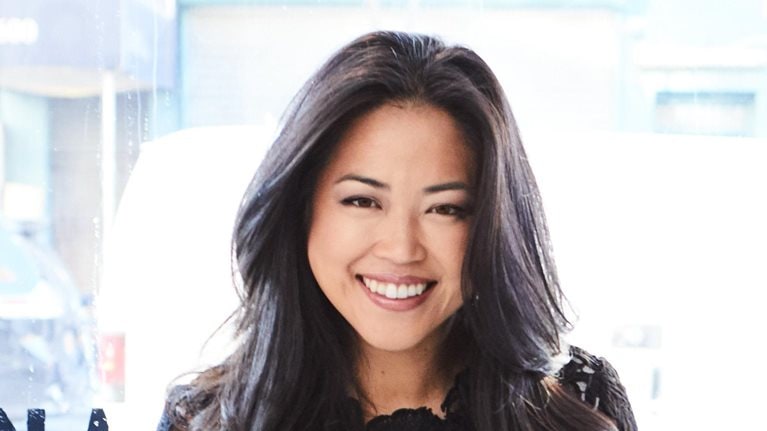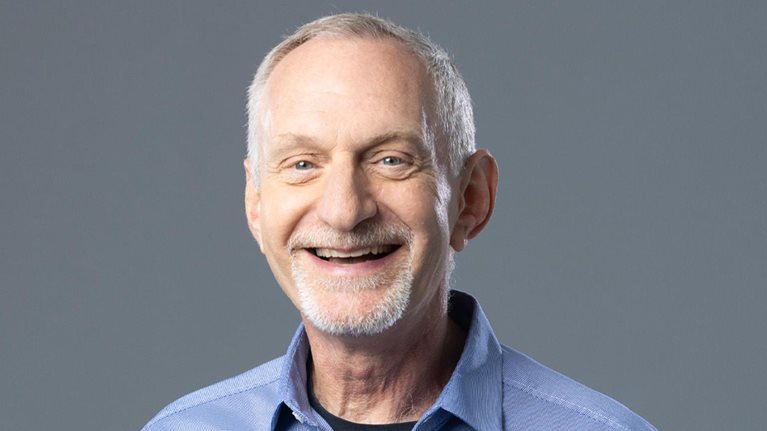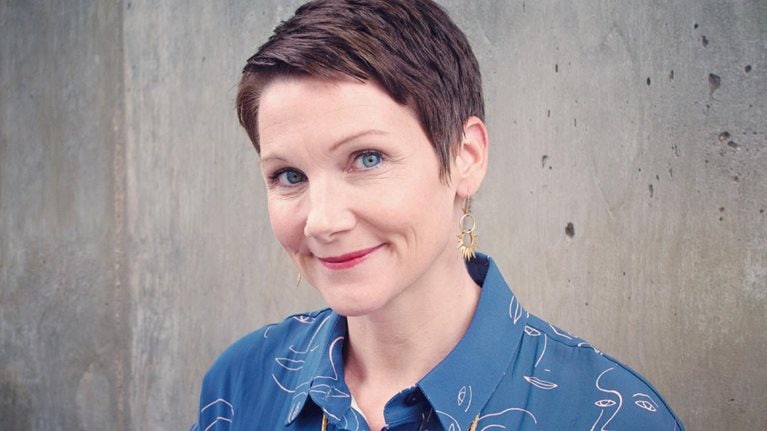In this edition of Author Talks, McKinsey head of brand strategy Amanda Lee chats with Bonnie Wan, the head of brand strategy and a partner at Goodby Silverstein & Partners, about her new book, The Life Brief: A Playbook for No-Regrets Living (Simon Element/Simon & Schuster, January 2024). Wan discovered that she could repurpose the creative brief that she had been using with advertising clients for decades—a revelation that has brought clarity and purpose to her own life. She now teaches people how to use a life brief to get to the heart of what they really want. An edited version of the conversation follows.
Why did you write this book?
I wrote this book because it’s a practice that has worked in my life, time and again. I call it not just time tested but life tested. As a 30-plus-year career brand strategist, the craft of strategy has become me. I am a strategist, whether I choose to be or not. I wrote a life brief for the first time during a moment of despair. I got to the essence of the gripping question in front of me, which was “What do I want in this moment?”
That gripping question was about my marriage, which I thought was broken and over. The path I was staring down in that moment was separation. That path wasn’t the one I wanted to take. But I thought it was the only one available.
As a brand strategist in a creative world, my job is to get to the essence of things so that we can then explore a really expanding sense of possibility and alternatives. And that’s what I did. I allowed myself in my own private practice to get really honest about what I wanted, not what other people expected or how other people might critique or judge me. With crystal clarity, I wrote the brief.
As a brand strategist in a creative world, my job is to get to the essence of things so that we can then explore an expanding sense of possibility and alternatives.
When we write creative briefs in my work, the act of writing creates a sharpness and a stickiness. I had a real epiphany: my husband wasn’t the problem. My relationship with time—and how I was spending it—was.
How is a life brief different from a creative brief in the advertising business?
The practice of the life brief is very similar to the practice of getting to a creative brief. As a strategist, my job is to make meaning out of messiness. Companies are working at breakneck speed in categories that are being disrupted all the time with new entrants. There are forces at play that can really sink a leader’s vision of where they go. These forces can disconnect leaders from the legacy, authenticity, and DNA of the company. My job as a brand strategist is to find that alignment: what the company has always been and connect that to where they want to go.
You have all the messiness, and you’re working to distill it down to the sharpest, shortest path from here to there. That practice is very similar in the life brief. I invite people to allow their “messy” to come out onto the page, to be nakedly honest, as I did in my own life. Only when you do that can you see the ingredients, create distance from them, and then meet them with curiosity. And that’s what strategists do.
Now we get curious. We want to dive deeper into this vein or that vein. As we collect the ingredients, they start to shape that single-minded, single-page creative brief. You can’t help but want to start. I work with creative people. The act of wanting to create—that sharp clarity—is similar in the life brief.
The life brief itself is a series of declarative statements. I say five statements because the whole idea is to be brief while summing things up in a memorable way that’s embedded in your mind and heart. You don’t have to carry a slide deck, a page, or a piece of paper. The message stuck with me from that very first life brief I wrote.
Once I realized my husband wasn’t the problem, it was time to write the brief. I wrote all the ways that I wanted to shift how I showed up and spent my time. I named the brief “Take our time.” It meant “take back ownership and control of our time.” “Our” was really important.
It also meant “slow down.” I was spreading myself so thin and saying “yes” to things that didn’t necessitate a “yes.” In fact, they should have demanded a “no.” That tendency left me very little at the end of each day for what mattered: my family and my marriage. Everything shifted after that clarity and the written declaration. In four months, we were living a completely different life.
Why is a simple question—‘What do you want?’—so hard to answer?
We’re out of practice. We don’t ask ourselves what we want. There are a few reasons for that. One is it’s scary. That’s because the way I ask the question isn’t just, “Eh, what do you want?” It’s not, “What do you feel like? What do you think you want?”
It is, “In your heart of hearts, what do you really, really want that maybe you haven’t allowed yourself to admit yet?” And that question is terrifying to some people. A woman who I met immediately responded to that question by saying, “My parents told me never ask that question. It will only lead to disappointment.”
We’ve had people in our lives who have told us that it’s a dangerous question out of love and good intention. We may have cultural barriers to that type of question. I think we’ve adopted and inherited lots of stories about that question. So we just develop a fear that our answers might be dangerous. They might disrupt the routines or the status quo of our lives.
You offer three distinct stages: Get messy, get clear, and get active. How does getting messy lead to getting clear?
The three stages are all so important. Yet we live in a culture, especially a business culture, with a bias for action. So we often skip over getting messy. That’s why the creative brief is such an important tool in the process of my agency work with clients. It’s not just single minded. It’s a point of alignment where everyone comes to agreement on the direction we’re headed.
In a life brief, the alignment is with yourself. But without that clarity, we sleepwalk through our lives, do things out of habit. Clarity settles us into a direction and gives us focus. It collects our mess in small bites over time. This doesn’t have to be over a long weekend or on a dedicated, monthlong retreat. In short spurts of time, you can practice allowing yourself to be honest and just let it out. Let it out without judgment, withholding, or editing.
When you look at those strands in your collection, you will likely have a similar experience to what I had after my very first life brief. I started to see a different story than the story I’d been telling myself in my mind. “Oh, wait, there’s a pattern here about time. What’s happening here? Now let me get curious about what’s underneath it. Why is it there? And why is that happening? And why again?”
There are so many strategic tools beyond the whys and the reframing. Everyone with a business perspective will recognize these tools. The tools aren’t new. But there’s something illuminating about applying them to the context of your life. The resulting mess brings up the ingredients—the clay that you can then shape as you’re getting clear.
Everyone with a business perspective will recognize these tools. The tools aren’t new. But there’s something illuminating about applying them to the context of your life.
What do you say to someone who might be tempted to skip the writing part of the life brief?
Don’t skip the writing. I’m calling myself out because I’m lazy when it comes to writing. I like to pontificate. But writing is essential to this process. Writing is exploratory. I call it “letting the pen lead.” The first part of the practice is that act of permission. It’s allowing yourself to have a question, a penetrating question.
The second part, getting clear, is a different form of writing. Now you’re writing to commit, to zero in on the stuff that matters—the stuff that’s sacred, nonnegotiable. You’re ignoring drama, distractions, and everything else you’re going to leave behind. Now you have the clay of the most meaningful stuff.
Now you will write as an act of commitment and expression. The best creative briefs aren’t only clear and sharp, but they’re also inspirational and motivating. You read the statements back to yourself, and you say, “Oh.” You have goosebumps or a fire in your belly.
It’s an emotional, intuitive process. So if we’re focused on the brain, this practice forces us to engage different parts of us: our souls, our guts, our intuition. The catalyst for action lives in those places. So we write to commit, to express. Once people have that clay on the paper, I invite them to push it three times.
If you have five declarative statements, your first time is just getting in the zone. It’s really loose and permissive. But once you get into the zone, you have the clay and can make the statement more honest. When you reread the draft, you immediately know, “I’m holding back. There are some cards not on the table.” The first push is to get more honest.
The second push is to get bolder. Take your statements to a place of discomfort. That nervousness and discomfort stem from not being sure how to make your declaration a reality. You’re not even sure if it’s possible. But the boldness and the courage lie in just allowing yourself to declare it without any guarantees that you will get it.
The third push is to make it visceral, expressive. When it comes to creative briefs, the difference between a meh brief and an ideal one could be just the difference of a word or of the word order.
How does someone choose what area to focus on for their life brief?
What grips you is zeroing in on the topic of your life brief. I’ve written life briefs for every part of my life: marriage, parenting, leadership, wealth. So I have a self-brief. That’s probably the most important brief.
So write a brief about whatever’s gripping you, whatever has a strong foothold. It’s the thing that pops up when you are driving and your focus meanders. It’s the thing that haunts you a little bit when you’re in bed at night or you wake up at 2:00 a.m. It’s your own voice beckoning you to a place of need.
I meet so many people who want to suppress that voice, that calling, that uncomfortable grip. They want to bury it in distraction by adding more to-dos—the busy trap. But we can begin addressing that discomfort in really small ways, in short spurts of time. We don’t have to go all the way. When you hear that beckoning, that’s the part of your life that’s asking for a life brief.
You say that, in advertising, if creative work doesn’t make the client nervous, it probably won’t work. Is the same true for a life brief?
Yes. Discomfort is your clue. It’s your signal that you’re getting somewhere significant. That growth is the feeling you want.
I cringe whenever there’s another article about happiness. “Happiness” to me is the outcome of doing deep work—of sitting in your mess, of engaging with it. It might be futile, but you’re doing it anyway. We talk about swagger, but we don’t always have confidence. Courage, though, is the practice of living courageously. Courage means that you’re going to do it anyway, even when you don’t feel the confidence.
Lean into the tension, the agitation. When you engage, you can find hope, aliveness, creativity—a creative solution—on the other side. I don’t mean art. I mean a creative solution that you hadn’t thought about, that you couldn’t have planned for, that you hadn’t imagined. A life brief is a way of engaging with all of the relationships in your life that have aliveness. Once you do that, it’s really hard to choose to go back to sleep.
A life brief is a way of engaging with all of the relationships in your life that have aliveness. Once you do that, it’s really hard to choose to go back to sleep.
What was the biggest surprise in writing this book?
The biggest surprise in writing the book was how much of a parallel our strategy tools were for getting us to new places in life and uncovering that aliveness. I had a hunch this could really work in other ways and on companies, on brands, on people, on organizations. But I didn’t understand that until I started doing it, practicing on my own life, and then teaching others in their lives.
Writing the book brought it sharply into focus. My editor’s direction was, “Your job here, Bonnie, is to walk the blind horse down the mountain and get to water with only your words. That’s all you have. And you are going to explain to them how to harness these tools and practice in their relationships with other people, with their work and their vocations, with themselves, with their communities and the causes they care about. That is your job.”
Every time I unpacked it a little bit more and worked through it, I was shocked. Now I meet therapists and coaches who say, “I never knew advertising had so much in common with therapy.” Then I think, “That was big. That’s validating.”
Watch the full interview



